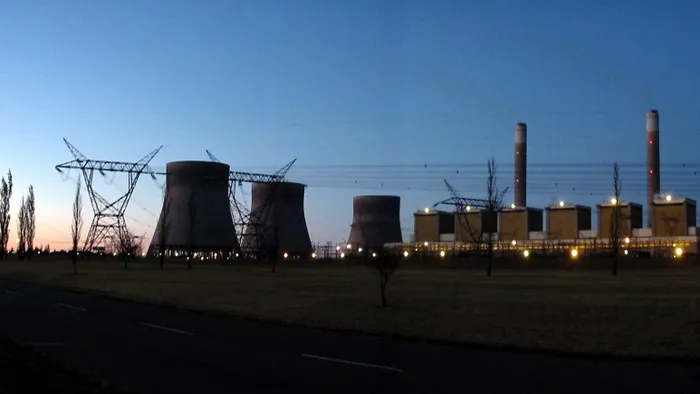Eskom logs nearly 9,600MW in unplanned outages over seven days

Eskom reported an average of 9,534MW in unplanned outages over the past week, roughly equal to the combined full-capacity output of Medupi and Kusile power stations.
Image: ESKOM/FILE
Eskom reported an average of 9,534MW in unplanned outages in the past week.
To put it in perspective, this is roughly the same as the combined output of Medupi and Kusile power stations at full capacity.
According to Eskom, the outages are a "significant improvement" from last year and come despite ongoing work under its Generation Recovery Plan.
The plan aims to improve plant reliability and reduce unplanned breakdowns.
The parastatal also said it is optimistic there will be no immediate load shedding, at least not before April next year.
Eskom announced this in a statement on Friday.
The utility said the month-to-date Energy Availability Factor, or EAF, stands at 70.45%.
It said it reflected "consistent gains in plant reliability and a reduction in unplanned outages — key to stabilising the grid and supporting economic growth".
Eskom said the electricity demand has been met for over 97.8% of the time so far in the current financial year.
It also reported reduced reliance on diesel-powered Open Cycle Gas Turbines, with year-to-date diesel expenditure remaining below budget.
The year-to-date load factor for OCGTs has decreased to 6.63%.
"On September 29, unit 6 at Kusile Power Station entered commercial operation, marking the completion of Eskom’s New-Build Programme," the utility said.
"This milestone concludes the construction of SA's two supercritical coal-fired power stations — Medupi and Kusile.
"Together, they can deliver up to 9,600MW at full capacity, strengthening the country’s continuous electricity supply — commonly referred to as baseload capacity.
"The unit’s output will be included in the EAF calculations, further contributing to Eskom’s overall performance metrics."
Eskom said between last Friday and Thursday, the utility recorded an average of 9,534MW in unplanned outages.
"It is a significant improvement compared to 11,505MW during the same period last year.
"This represents a year-on-year reduction of 1,971MW in breakdowns — nearly equivalent to the entire output capacity of Koeberg Power Station.
"This trend demonstrates increasing stability and improved reliability across Eskom’s generation fleet.
"The country has gone 140 consecutive days without loadshedding, with only 26 hours recorded between April 1 and October 2 2025."
The utility published its Summer Outlook in September, covering the period from September 1 to March 31 2026.
It forecasts no loadshedding due to the structural progress in plant performance as a result of the ongoing implementation of the Generation Recovery Plan.
Eskom said despite the "overall stability and reliability" of its power system, load reduction remains necessary in certain high-risk areas to safeguard infrastructure and ensure public safety.
This is primarily due to electricity theft through illegal connections and meter tampering.
The activities often result in equipment damage, transformer overloads, and, in severe cases, explosions and prolonged outages.
To mitigate these risks, Eskom said it may implement load reduction by temporarily switching off power in affected areas during peak demand periods.
Between April and June 2025, average load reductions ranged from 529MW to 544MW.
Eskom, however, said it was committed to eliminating load reduction within the next 12 to 18 months.
"This goal will be achieved by addressing 640,000 illegal connections, upgrading infrastructure — including the installation of smart meters — curbing illegal electricity vending, and expanding access to free basic electricity in priority areas," it said.
"Customers are urged to avoid illegal connections, purchase electricity only from Eskom-accredited vendors, and regularise their accounts."
IOL News
Get your news on the go. Download the latest IOL App for Android and IOS now
Related Topics: